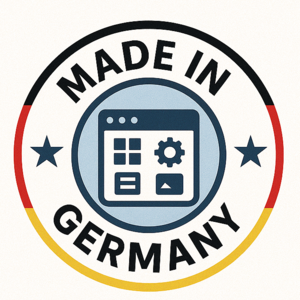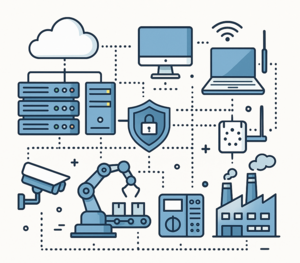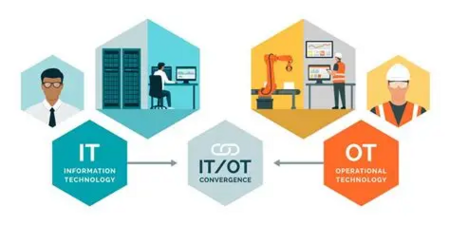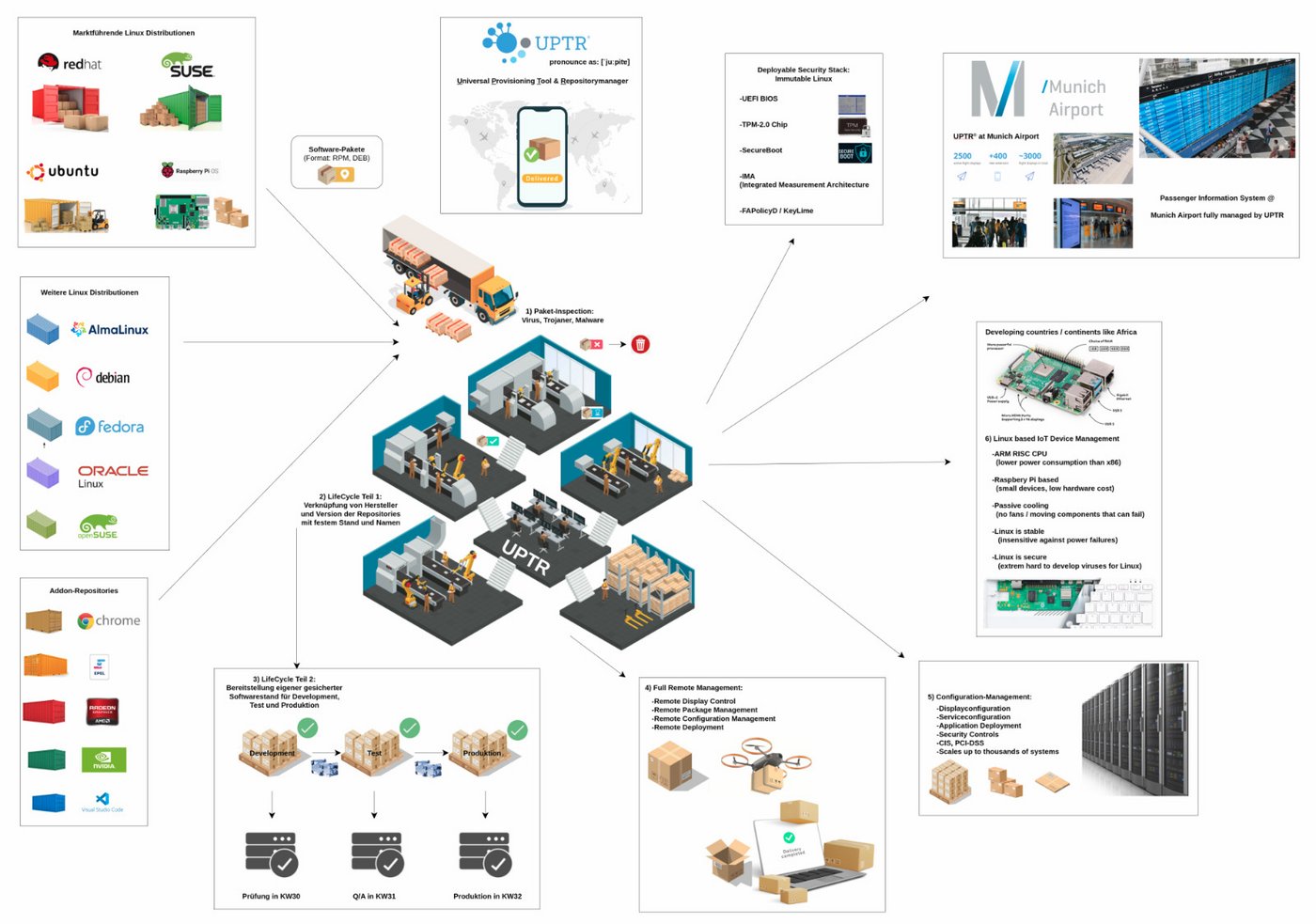Software Solutions Made in Germany

Cyber Resilience - Digital Sovereignty - Future-Proofing are goals worth turning your company upside down for.
An up-to-date IT/OT system landscape is essential for success.
⇒ APILANi is Your #1 Alliance Partner helping you achieve your goals without losing focus.
Software Solutions Made in Germany: What does it for you?

Fraunhofer IESE's assessment on the importance of German software products:
The advantages of German software lie in its quality, innovation, and security. German software companies are known for their thorough testing and quality control, which ensures that products meet the highest quality standards. These extensive testing procedures are an essential part of German development processes and form the backbone of software quality.
Germany stands not only for quality, but also for innovation. The German software industry is known for its ability to constantly evolve and set new standards. A key factor in Germany's innovative strength is its extensive focus on research and development (R&D). German companies invest considerable resources in R&D to stay one step ahead and develop new technologies. These investments are crucial for maintaining competitiveness in the global market. Through continuous innovation, German software companies can tap into new market niches and remain at the forefront of technological developments.
The IT/OT system landscape and your business goals
IT/OT Infrastructure Management

The IT/OT infrastructure encompasses all physical and virtual components – hardware, software, and networks, both on-premises and at the edge or in the cloud – for the deployment and operation of digital applications and thus for the smooth running of business processes. If even a single cog in this gear fails, the entire system can fail. Numerous hack attacks prove this statement every day.
Good preparation for cyber resilience therefore means keeping the company's IT/OT system landscape as transparent and up-to-date as possible. This primarily includes comprehensive management, regular maintenance, and detailed monitoring of the entire IT/OT environment. Vulnerabilities should be identified and remediated early in compliance with corporate standards and security policies to ensure optimal performance of the overall system and prevent corporate goals from being jeopardized by system outages.
Overview: Problems and Solution Approaches in IT/OT Infrastructure Management
Problem | Impact | Solution |
|---|---|---|
1. Complexity & Heterogeneity | ||
🛑 multiple systems, versions, vendors (no standardization) | ➡️ high maintenance / integration effort | ✅ Standardization, platform management, automation (e.g., Infrastructure-as-Code) |
2. Lack of Transparency | ||
| 🛑 no central visibility of assets, dependencies, or system status | ➡️ delayed troubleshooting, hidden risks | ✅ Implementation of CMDB, comprehensive monitoring & reporting |
3. Security Gaps | ||
| 🛑 unpatched systems, weak access controls, outdated protocols | ➡️ increased attack surface, operational risks | ✅ automated patch management, Zero-Trust architecture, network segmentation |
4. Availability & Performance | ||
| 🛑 missing redundancy, manual interventions | ➡️ System downtime, production interruptions | ✅ automated failover, performance monitoring, capacity planning |
5. Organizational Silos | ||
| 🛑 disconnected IT, OT, and operations teams | ➡️ inefficient collaboration, duplicated work | ✅ DevOps/ITSM integration, centralized documentation, clear accountability |
6. Manual Operations | ||
| 🛑 Repetitive tasks performed manually | ➡️ Error-prone, time-consuming | ✅ Workflow automation, orchestration tools, scripting |
7. Skill Gaps & Knowledge Loss | ||
| 🛑 Knowledge not documented, dependency on key individuals | ➡️ Inefficiency, operational risk | ✅ Knowledge management, documentation policies, training programs |
8. Cost & Resource Constraints | ||
| 🛑 high operational costs, low efficiency | ➡️ Budget pressure, delayed modernization | ✅ Cost transparency, hybrid/cloud strategies, automation for cost reduction |
9. Low Agility & Flexibility | ||
| 🛑 slow response to new requirements | ➡️ reduced competitiveness | ✅ modular architectures, CI/CD integration, agile infrastructure models |
10. Compliance & Governance | ||
| 🛑 missing audit trails, unclear responsibilities | ➡️ Compliance violations, audit risks | ✅ Governance frameworks, documentation and audit tools |
11. IT/OT Integration | ||
| 🛑 different system lifecycles, incompatible technologies | ➡️ Security vulnerabilities, data inconsistencies | ✅ secure interfaces, unified management platforms, OT-specific security concepts |

The integration of IT and OT systems (also known as IT/OT convergence) enables real-time data exchange, thus contributing to increased efficiency and improved decision-making in process automation. It is therefore important to establish regular maintenance cycles for both IT and OT systems.
Complex infrastructures are the backbone of modern enterprises – but they also bring with them numerous operational, security and organizational challenges.
⚙️ 1. Complexity & Lack of Transparency
🛑 Problem: Diverse systems, versions and vendors create fragmented structures.
⚡ Impact: High maintenance effort, integration issues and slow troubleshooting.
✅ Solution: Standardization, Infrastructure-as-Code, centralized monitoring and asset management.
🔒 2. Security Vulnerabilities & Attack Surfaces
🛑 Problem: Unpatched systems and weak access controls increase risks.
⚡ Impact: Security incidents, data loss, and operational downtime.
✅ Solution: Automated patch management, Zero-Trust architecture, network segmentation, and OT security.
🤝 3. Silos & Communication Gaps
🛑 Problem: IT, OT, and business units often work in isolation.
⚡ Impact: Information loss, duplicated work, and unclear responsibilities.
✅ Solution: DevOps and ITSM integration, shared dashboards, and clear role definitions.
🔁 4. Manual Processes & Knowledge Gaps
🛑 Problem: Routine tasks are still executed manually; knowledge is not documented.
⚡ Impact: High error rate, operational risk, and slow onboarding.
✅ Solution: Automation, documentation standards, knowledge management, and training programs.
💰 5. Cost Pressure & Lack of Agility
🛑 Problem: High operating costs and slow adaptation to change.
⚡ Impact: Reduced efficiency and innovation delays.
✅ Solution: Cost transparency, hybrid/cloud strategies, modular architectures, and CI/CD integration.
🧩 6. IT/OT Integration
🛑 Problem: Different lifecycles and incompatible technologies between IT and OT systems.
⚡ Impact: Security vulnerabilities, data silos, and inefficiencies.
✅ Solution: Secure interfaces, unified management platforms, and OT-compatible security frameworks.
Automated IT/OT Infrastructure Management: Bridging Technology and Operations
The future of industrial infrastructure lies in the seamless connection between IT and OT. A perfect software solution ensures secure, efficient and transparent integration across both domains – from network architecture to data management. This creates a solid foundation for productivity, security and sustainable digital transformation.
Key Benefits of an automated IT/OT Infrastructure Management System:
✔️ holistic transparency: Unified monitoring of IT and OT systems
✔️ enhanced security: Protection of critical production and business data
✔️ higher efficiency: Optimized processes through integrated infrastructure management
✔️ Future-Readiness: Foundation for Industry 4.0, cloud integration, and IIoT initiatives
✔️ Business Continuity: Stable, scalable, and resilient system environments
Our contribution:
With deep expertise in technology, industry and international markets, APILANi combines strategic consulting with hands-on execution. We help IT and OT teams break down silos, connect data and build future-ready infrastructures – enabling measurable value and sustainable growth.
With UPTR™ we offer a powerful Infrastructure Management Platform for complex IT/OT infrastructures Made in Germany.
Introduction Solution Concept: UPTR™ – The autopilot for your IT operations
With UPTR™, LibOnIce delivers an open-source, 'Made in Germany' platform for the automated operation of complex IT/OT infrastructures – especially for logistics, industrial and critical infrastructure companies (KRITIS). UPTR™ handles System Provisioning, Software Lifecycle Management and DevOps integration – securely, transparently and vendor-independently.

🎯 Problem - Companies with large IT/OT landscapes struggle with:
🛑 high manual effort in operations
🛑 heterogeneous systems & security risks
🛑 increasing compliance requirements (NIS2, KRITIS)
🛑 dependence on proprietary, expensive tools
💎 UPTR™ USP & Competitive Edge
➡️ holistic solution (provisioning + lifecycle + DevOps)
➡️️️ open source security-first design
➡️️ automation reduces operating costs by up to 70%
➡️️ compliance-ready (NIS2 / KRITIS)
➡️️ vendor-neutral – maximum customer control
💡 The Infrastructure Management Platform UPTR™ offers
✅ centralized management of thousands of systems NIS2 & ISO 27001-compliant
✅ automation Open source-based → no license costs, full transparency
✅ subscription-based usage model
✅ services optionally available as a public cloud Managed Services (24/7) or On-Premises solution
The result: faster rollouts, more stable operational processes and clear traceability down to the last detail.
UPTR™ Module Overview:
| Module | Main Function | Details |
|---|---|---|
| 1. Web-UI / Dashboard | ➡️ Surface-level management | ✅ modern web interface based on Angular. |
| 2. System Installation & Provisioning | ➡️ Operating system installation & initial deployment | ✅ supports many Linux distributions (AlmaLinux, CentOS, Debian, Fedora, Oracle Linux, RHEL, Rocky, SLES, Ubuntu coming soon). Support for bare metal and virtualization (Proxmox, vSphere, oVirt, RHEV) as well as installation methods (autoyast, kickstart, preseed) |
| 3. System Management | ➡️ Management of running systems | ✅ Templates, static/dynamic groups, VNC access, client attributes, search/filter functions |
| 4. Repository Management | ➡️ Management of Linux repositories & lifecycle stages | ✅ over 200 preconfigured Linux repositories, creation of custom repositories, lifecycles such as Develop → QA → Production, collection in collections |
| 5. Package, Patch & Errata Management | ➡️ Package and patch management including security information | ✅ Packages (RPM, DEB coming soon), errata and CVE information, patch planning and execution against hosts |
| 6. Configuration Management (Ansible-Integration) | ➡️ Automation & Infrastructure as Code | ✅ integrated Ansible support, online playbook editor, collection of Ansible facts, support for push/pull mechanisms |
| 7. IP Address Management (IPAM) with DNS & DHCP | ➡️ Network services during the deployment process | ✅ Subnet declaration, IP utilization, DNS entries (ISC Bind, Active Directory, Infoblox), DHCP entries (dnsmasq, ISC DHCP) during provisioning |
| 8. User & Role Management | ➡️ Rights management & access control | ✅ local or LDAP authentication, roles such as Reader, Editor, Manager, Admin |
| 9. Task Manager & Scheduler | ➡️ Task automation | ✅ central view of all tasks, Quartz-like scheduler with interval, cron syntax, etc. Tasks such as provisioning, patching, repository syncing |